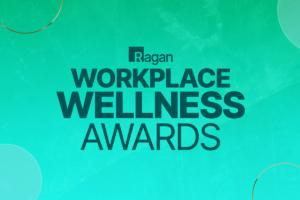Comms can support employee wellbeing during the holiday season. Here’s how.
Comms can embrace these tactics to ensure wellness is still a priority for employees during the holidays.

It’s the holiday season, and even with the general sense of cheer associated with this time of year, it’s not without its stresses. There are deadlines, scheduled time off for team members that leave others to pick up the slack, and personal stressors outside of work.
Luckily, there are also tactics that communicators can take to ensure wellness is still a priority for employees during the holiday season, even if a team is small and not as rich in resources as some others might be.
Why communicators should lead on wellness outreach
Like so many things in life, the start of good wellness comms centers on how you look at it. It’s easy to forget with all the outreach to other functions, but communicators are employees too.
“Communicators have the unique perspective of both being employees and driving the culture through visual and written content. They are customer zero,” said Cat Colella-Graham, adjunct professor at St. Francis College and an independent employee experience consultant.
“Oftentimes reminding ourselves we are also the audience can help us make space for employees to show up as their full selves, and your messaging, both content and cadence, drives the intended outcomes.”
Wellness comms, and any comms efforts for that matter, are only effective if they reach their intended audience. With so much noise and stress around the holidays, comms can play a big role in reducing them.
“Much employee stress comes from the amount of emails and Slack messages that ramp up in the face of year-end deadlines,” Colella-Graham continued.
“Comms pros are wise to reduce the cadence this time of year, in favor of once weekly roundup like a Wednesday Wisdom email with no more than five fast reads. Focus one on stress relief of which there are so many articles, another could be employee stories, important events like holiday gatherings, and finally messages from the top recognizing the hard work everyone is doing and encouraging employees to unplug during the holidays.”
Solutions for hybrid and remote work
Just because an employee isn’t commuting into a physical office every day doesn’t mean that their stresses aren’t as real and valid. You can help ease this stress by focusing wellness efforts on a sense of inclusion. In the end, it’s all about making time and making people feel seen.
“Build time into the team’s schedule specifically for wellness and help them understand how to use it,” said Karianne Michelle, president and chief strategist at Lofti. “Schedule a team or company activity — virtual works if the team is remote.”
It’s important for senior leaders to attend such wellness sessions, as it will help add validity to wellness efforts. Michelle added that comms should look into using scheduling tools to ensure that people are actually available and present for wellness sessions, whether they’re remote, hybrid, or in-office.
“There are many low-cost, live virtual sessions available on platforms like Confetti that make it easy to schedule for teams,” she said.
Making wellness a top priority — in and out of the office
With so many things to juggle at the end of the year, it can be easy to lose sight of the importance of workplace wellness around the holidays. But that doesn’t mean it’s not an achievable aim for even small teams and organizations.
“This time of year, when the fourth quarter is already so stressful, the holidays and team coverage can tip the stress scales,” said Colella-Graham.
She added that you can even create a more cohesive work community by nudging employees to share photos and stories about their activities and adventures away from work during the holiday season.
“One way to ensure you prioritize wellbeing is to celebrate time off.”
“Encourage employees to share photos of what they do outside of work, celebrate milestones like their first holiday in a new house or with a new puppy. Recognition of the whole employee can boost the sense of wellbeing.”
Small teams, personalized wellness and belonging
What to do if a team is small and light on resources? The key lies within the values and the culture of the organization, which managers can communicate to their reports.
“Communicators can create uniform guidance and messaging to help managers support their employees during this busy and often stressful time of year,” Colella-Graham said. “When everyone hears the same message, they become more comfortable being human at work.”
You can also help a smaller team destress together by creating outlets for employees to bond, reinforcing the idea that no one is going through stressful times alone.
“Communicators can also create channels so employees can share how they are doing, share tips and tricks to destress during this time of year, how they celebrate the holidays the honor and everyone can feel they belong,” Colella-Graham added.
Personalized wellness can also be helpful in the face of holiday stresses and year-end deadlines. Much of this responsibility lies on managers, but you can help push them in the right direction. Think someone is stressed? Just ask about how they’re handling the holidays and deadline juggling and be there to help.
“Comms professionals can provide thoughtful talking points or starter questions to managers and leaders to help ensure they are prepared in their 1:1s or team meetings for conversations around personal wellbeing,” Michelle said.
Looking to leaders
Colella-Graham emphasized that leadership has a role to play in year-end wellness too.
“Leaders who add a day of rest this time of year, recognizing how stressful it can be, often galvanize teams during high output times,” she said.
It’s also important for communicators to reach out with multiple channels, increasing the likelihood that a message hits home. That can also mean pointing toward things like external resources or EAPs to reinforce that no matter the size of the team, wellness matters around the holidays and the whole year.
“Planning communication across multiple channels and platforms with consistent messaging is important,” Michelle said.
“Embedding key messages into newsletters, team Slack channels, social media pages, calendar invites, talking points from managers and if needed, physical printed materials for those in deskless environments will help to ensure all employees are reached.”
Sean Devlin is an editor at Ragan Communications. In his spare time he enjoys Philly sports, a good pint and ’90s trivia night.







